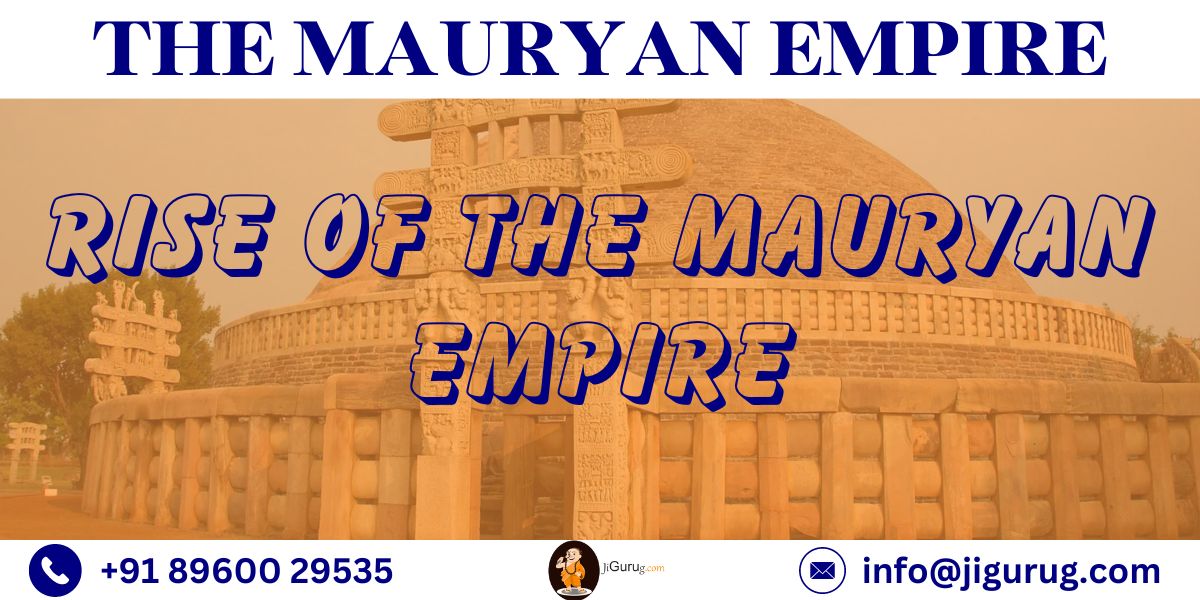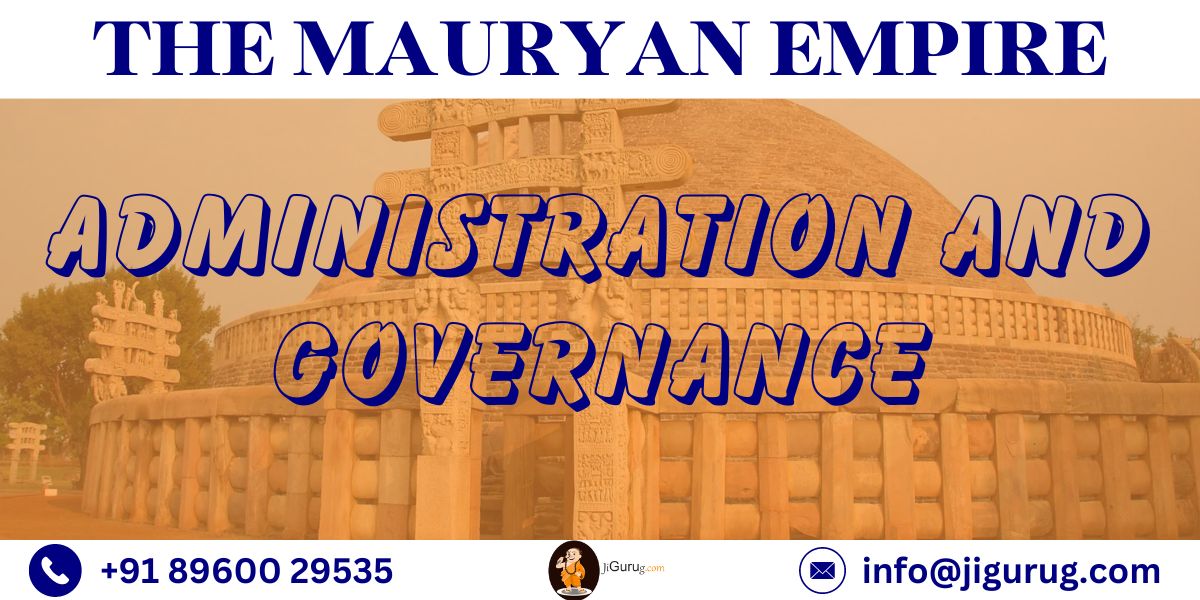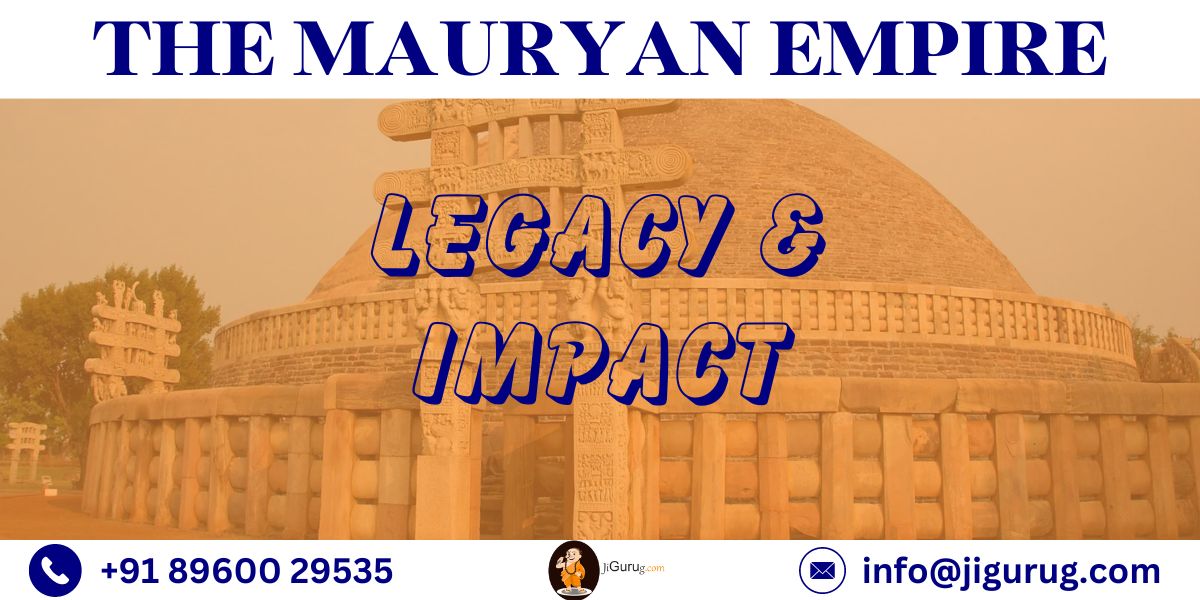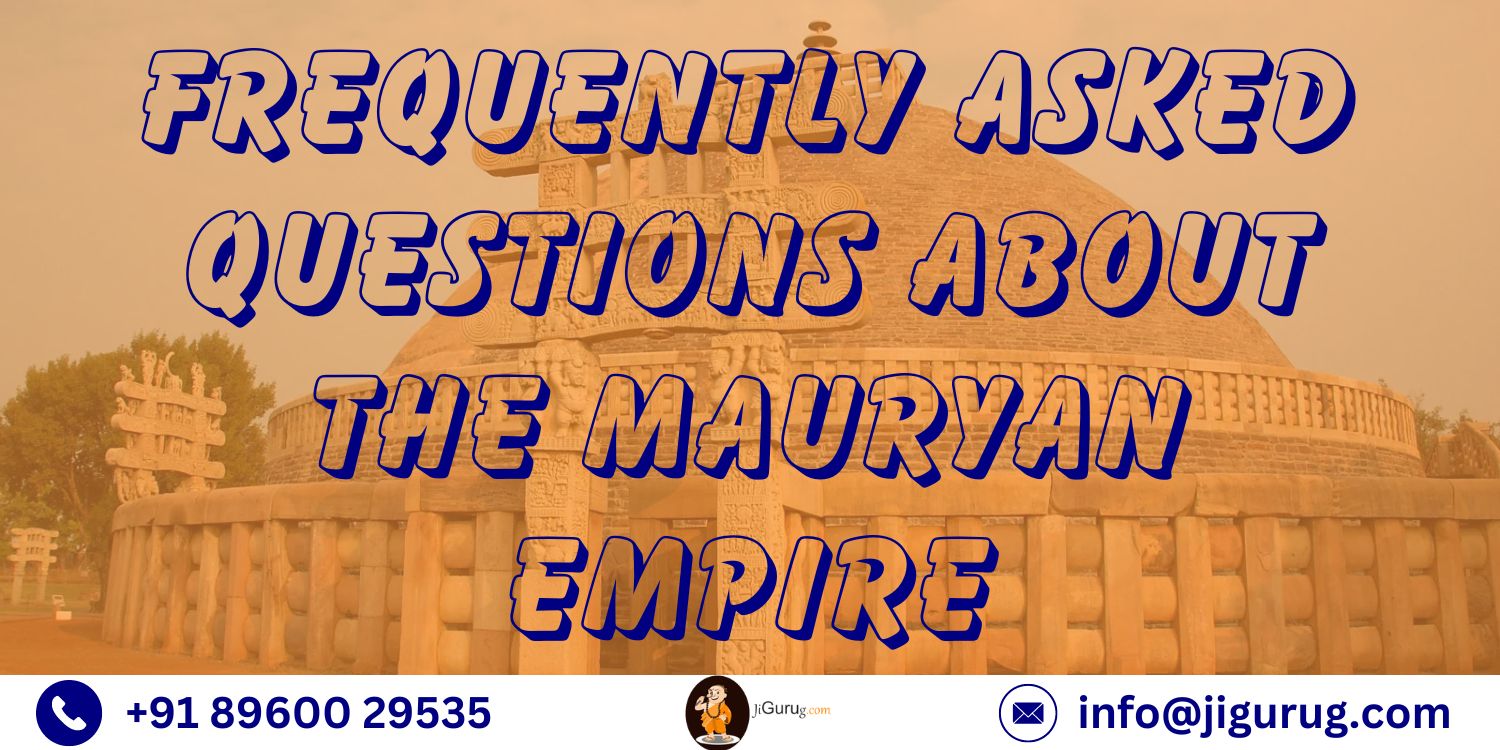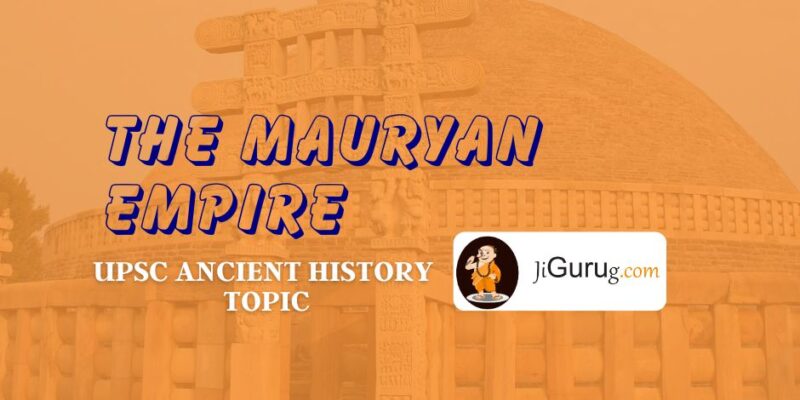
The Mauryan Empire: Rise, Achievements, and Legacy
The Mauryan Empire holds immense importance in UPSC History as it represents a significant phase in ancient Indian history. Studying the Mauryan Empire provides valuable insights into the political, administrative, and cultural dynamics of that time. The rise of Chandragupta Maurya and the reign of Emperor Ashoka the Great showcase the empire’s power and influence. The Mauryan Empire’s administrative reforms, including the establishment of a well-structured bureaucracy and the use of imperial edicts, have left a lasting impact on governance systems.
Furthermore, the empire’s reach across the Indian subcontinent facilitated the spread of Buddhism and influenced trade and cultural exchange. Understanding the Mauryan Empire is crucial for UPSC CSE aspirants as it helps them grasp the complexities of ancient Indian history and prepares them for related questions in the examination.
The Mauryan Empire, spanning from 322 BCE to 185 BCE, stands as a significant chapter in the rich tapestry of ancient Indian history. Under the visionary leadership of Emperor Chandragupta Maurya, this empire flourished and left an indelible mark on the Indian subcontinent. In this article, we delve into the key aspects of the Mauryan Empire, exploring its rise, administration, cultural achievements, and enduring legacy.
Rise of the Mauryan Empire:
The Mauryan Empire’s origins can be traced back to Chandragupta Maurya, who, with the guidance of his mentor, Chanakya, overthrew the Nanda dynasty and established the empire. Their military prowess and astute political strategies helped them conquer vast territories, encompassing present-day India, Pakistan, Afghanistan, and parts of Iran.
Administration and Governance:
The Mauryan Empire was known for its efficient administrative system, with a well-organized bureaucracy. Emperor Ashoka, the most renowned Mauryan ruler, implemented a system of governance that emphasized social welfare, justice, and religious tolerance. His rock edicts, inscribed throughout the empire, provided insights into the principles and policies followed by the Mauryan administration.
Ashoka’s Conversion to Buddhism:
One of the pivotal moments in Mauryan history was Emperor Ashoka’s conversion to Buddhism after the brutal Kalinga War. This transformation led Ashoka to renounce violence and embrace the teachings of Buddha. His patronage of Buddhism not only influenced the spread of religion within the empire but also fostered the development of art and architecture.
Cultural Achievements:
The Mauryan Empire witnessed a vibrant cultural renaissance, with advancements in art, architecture, and literature. The famous Mauryan pillars, exemplified by the Ashoka Pillar at Sarnath, showcased exquisite craftsmanship and served as a medium to propagate Ashoka’s moral teachings. The art form of the period, marked by its realism and finesse, thrived in various forms such as sculpture and coinage.
Legacy and Impact:
The Mauryan Empire’s influence extended beyond its geographical boundaries. Ashoka’s missionary efforts brought Buddhism to regions as far as Southeast Asia, leaving an indelible impact on the cultural and religious landscape of those regions. The administrative practices implemented by the Mauryas laid the foundation for subsequent dynasties, shaping the governance systems of medieval and modern India.
Must Check:
Frequently Asked Questions About The Mauryan Empire:
Q: When did the Mauryan Empire exist?
A: The Mauryan Empire existed from 322 BCE to 185 BCE.
Q: Who was the founder of the Mauryan Empire?
A: The founder of the Mauryan Empire was Emperor Chandragupta Maurya.
Q: What was the capital of the Mauryan Empire?
A: The capital of the Mauryan Empire was initially at Pataliputra (modern-day Patna, Bihar, India).
Q: Who was the most famous emperor of the Mauryan Empire?
A: Emperor Ashoka is the most famous and well-known emperor of the Mauryan Empire.
Q: What were some of the significant achievements of the Mauryan Empire?
A: The Mauryan Empire had several notable achievements, including its efficient administration, advancements in art and architecture, the spread of Buddhism under Ashoka’s patronage, and the establishment of a vast empire through military conquests.
Q: How did the Mauryan Empire decline?
A: The decline of the Mauryan Empire is attributed to various factors, including weak successors after Ashoka, regional rebellions, and invasions by foreign powers.
Q: What was the impact of the Mauryan Empire on ancient India?
A: The Mauryan Empire had a profound impact on ancient India. It established a strong centralized administration, spread Buddhism across the region, and influenced subsequent dynasties and governance systems. The cultural and artistic achievements of the Mauryan Empire also left a lasting legacy.
Q: Are there any surviving artifacts or structures from the Mauryan Empire?
A: Although few physical structures remain from the Mauryan Empire, the most famous relics are the Ashoka Pillars and their inscriptions found in various parts of India.
Q: How can I learn more about the Mauryan Empire?
A: To learn more about the Mauryan Empire, you can refer to reputable historical books, academic journals, and online resources, and visit museums that showcase artifacts from that era. Consulting experts in the field of ancient Indian history can also provide valuable insights.
Disclaimer: The article provides an overview of the Mauryan Empire based on the historical records available. Efforts have been made to ensure accuracy, but historical understanding is subject to ongoing research. New evidence may emerge, altering our understanding of the Mauryan Empire. Readers are encouraged to consult multiple sources for an updated understanding. The author and the publishing platform are not liable for errors or consequences arising from the use of this information.

